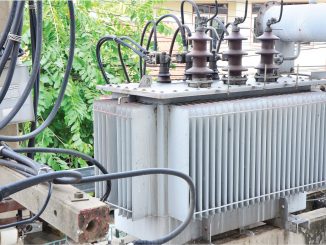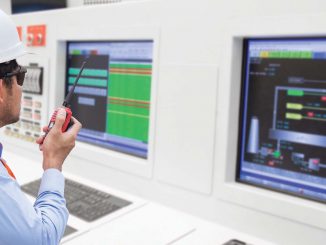
Digital solutions such as artificial intelligence (AI), machine learning (ML) and internet of things (IoT) are gaining traction to manage the networks, restore outages more quickly and manage distributed energy generating sources in the most effective and affordable manner. There are several applications of these technologies that aim to optimise processes, predict issues and help save money. These technological solutions have the potential to transform the sector. Power companies can use these technologies to make predictions, manage their networks and plan maintenance. In addition, customers may benefit from continuous green energy and receive prior notification of scheduled grid repair activities that can cause power disruptions.
Power Line takes a look at some of the applications of digital technologies in network management…
Applications of AI, ML and IoT
Grid management: The management of multiple grid participants and grid balancing have become difficult with the decentralisation and digitalisation of the power grid. It requires analysis and assessment of an abundance of data, which is processed more rapidly and effectively using AI. Another area where AI is crucial is smart grids. Power generating industries must now respond effectively to energy demand, especially with the rise in the number of intermittent power generation sources such as solar and wind. In addition to transmitting power, these intelligent grids transfer data. The data comes from many consumers, producers and storage facilities connected to the grid. AI assists in their analysis, evaluation and control. By identifying irregular demand, generation and transmission in real time, and creating suitable solutions, it helps stabilise the power network. IoT technology is used to collect information on the grid’s functioning and send real-time reports of any potential faults to power utilities. Energy providers can address any network inefficiencies, locate the root cause and take immediate action using these insights, thus preventing outages and downtime. By simulating the performance and intensity of components, IoT in combination with AI/ ML will be able to give utilities early warning about any possible concerns. This will lower utilities’ operations and maintenance expenses by helping them diagnose and schedule any problems for repair in advance.
Energy efficiency: The cost of power in industrial units may be significantly reduced with the use of IoT-enabled energy management systems. These technologies are complemented by AI and ML, which provide analytical insights to enhance performance. In addition, they support managers by improving decision-making and operation simulation. Industrial units will also benefit from the integration of IoT-based technologies supported by AI/ML algorithms in predicting energy usage, and maximising energy consumption. In order to build a predictive model for forecasting, AI/ML algorithms can collect and analyse historical, daily data of different parameters, such as temperature and lighting, within an industrial unit. Energy suppliers can then allocate energy to the appropriate areas by gaining a better understanding of the total energy production and consumption.
Preventive maintenance: In order to manage resources effectively and cautiously, predictive maintenance is essential. Damaged equipment or defects in the T&D network pose a considerable risk and humans cannot predict every breakdown. AI can help identify flaws such as corrosion and poor insulation and avoid failures. AI helps validate the production quality and provide insights into the defects with the help of analytics. AI solutions that help in the detection of defects are very affordable and cost-effective. With the use of predictive analytics, operators can assess the condition of the equipment and take preventive action before a catastrophe can happen. Energy suppliers may better allocate their resources to their needs, anticipate demand, foresee problems and conserve resources wherever feasible with the use of AI-enabled predictive algorithms. Effective resource management helps decrease costs while increasing efficiency, resulting in power and cost savings. Further, energy suppliers can get precise projections using predictive methods, thus enhancing energy planning and power plant despatch.
Grid security: The power grid is a complex system that is vulnerable to cyberattacks. AI and ML can be used to improve the security of energy grids by preventing cyberattacks before they happen. This involves using data analytics to identify patterns in energy data that may be indicative of a cyberattack. Once a cyberattack has been identified, AI and ML can be used to respond to the attack.
Power trading: As energy has to be delivered right away, energy trading is different from trading other commodities. This presents a challenge for energy traders, but it is also an opportunity because energy markets are becoming more liquid. By forecasting energy demand and giving traders access to real-time pricing data, AI and ML technologies can improve the efficiency of the energy trading market. Energy traders can then use this information to make better informed decisions about when to buy and sell energy.
Automatic meter reading: Manual input and billing systems take a lot of time. They are costly as well as prone to mistakes. Automatic meter reading (AMR) systems enable large infrastructure set-ups to simply gather data, assess cost and identify the possibility of improving energy efficiency in the T&D system. AMR provides real-time billing information. Compared to manual meter reading, it has the benefit of being more accurate. In addition, it has the capacity to store data at distribution hubs connected to the utility’s networks. Energy consumption can also be tracked through AMR to help in energy conservation and prevent energy thefts.
Distributed energy generation: Consumers are now contributing to power generation, effectively acting as producers (prosumers). As these prosumers are becoming important players in the system, AI will help them in decision-making about the optimal time for distributed generation to contribute to the grid rather than draw from it. AI can also assist conventional producers and system operators that will have to balance intermittent renewables, distributed generation including prosumers and new demand-side trends such as the growth of electric vehicles.
Customer interaction: Utilities are adopting AI and ML technologies for customer engagement. By using AI and ML, companies can provide customers with information that is specific to their needs. This involves using data analytics to understand customer energy usage and then providing them with information about how they can reduce their energy consumption by changing their usage habits. The companies are using AI/ML-enabled technologies such as chatbot and voicebot to increase their customer engagement.
AI, ML and IoT solutions are revolutionising the power sector with their applications and by helping overcome complex situations. The adoption of these technologies in the power sector is expected to increase in proportion with renewable energy uptake in the grid. With improving technologies and declining costs, AI, ML and IoT-based solutions are likely to be the future of the power sector including the T&D segment.



